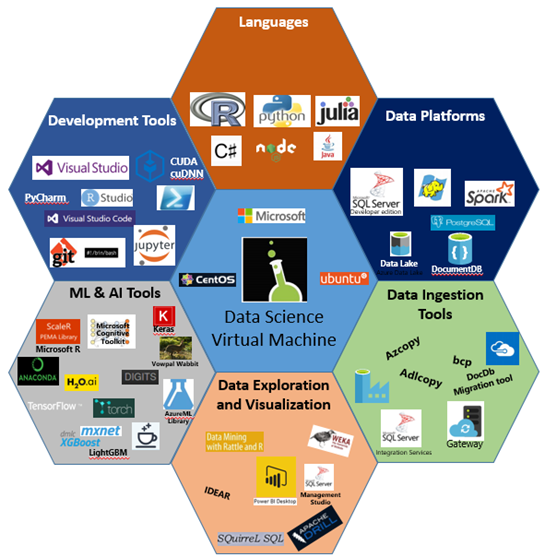Deep Learning on the New Ubuntu-Based Data Science Virtual Machine for Linux
Authored by Paul Shealy, Senior Software Engineer, and Gopi Kumar, Principal Program Manager, at Microsoft.
Deep learning has received significant attention recently for its ability to create machine learning models with very high accuracy. It's especially popular in image and speech recognition tasks, where the availability of massive datasets with rich information make it feasible to train ever-larger neural networks on powerful GPUs and achieve groundbreaking results. Although there are a variety of deep learning frameworks available, getting started with one means taking time to download and install the framework, libraries, and other tools before writing your first line of code.
Microsoft's Data Science Virtual Machine (DSVM) is a family of popular VM images published on the Azure marketplace with a broad choice of machine learning and data science tools. Microsoft is extending it with the introduction of a brand-new offering in this family – the Data Science Virtual Machine for Linux, based on Ubuntu 16.04LTS – that also includes a comprehensive set of popular deep learning frameworks.
Deep learning frameworks in the new VM include:
- Microsoft Cognitive Toolkit
- Caffe and Caffe2
- TensorFlow
- H2O
- MXNet
- NVIDIA DIGITS
- Theano
- Torch, including PyTorch
- Keras
The image can be deployed on VMs with GPUs or CPU-only VMs. It also includes OpenCV, matplotlib and many other libraries that you will find useful.
Run dsvm-more-info at a command prompt or visit the documentation for more information about these frameworks and how to get started.
Sample Jupyter notebooks are included for most frameworks. Start Jupyter or log in to JupyterHub to browse the samples for an easy way to explore the frameworks and get started with deep learning.
GPU Support
Training a deep neural network requires considerable computational resources, so things can be made significantly faster by running on one or more GPUs. Azure now offers NC-class VM sizes with 1-4 NVIDIA K80 GPUs for computational workloads. All deep learning frameworks on the VM are compiled with GPU support, and the NVIDIA driver, CUDA and cuDNN are included. You may also choose to run the VM on a CPU if you prefer, and that is supported without code changes. And because this is running on Azure, you can choose a smaller VM size for setup and exploration, then scale up to one or more GPUs for training.
The VM comes with nvidia-smi to monitor GPU usage during training and help optimize parameters to make full use of the GPU. It also includes NVIDIA Docker if you want to run Docker containers with GPU access.
Data Science Virtual Machine
The Data Science Virtual Machine family of VM images on Azure includes the DSVM for Windows, a CentOS-based DSVM for Linux, and an Ubuntu-based DSVM for Linux. These images come with popular data science and machine learning tools, including Microsoft R Server Developer Edition, Microsoft R Open, Anaconda Python, Julia, Jupyter notebooks, Visual Studio Code, RStudio, xgboost, and many more. A full list of tools for all editions of the DSVM is available here. The DSVM has proven popular with data scientists as it helps them focus on their tasks and skip mundane steps around tool installation and configuration.

To try deep learning on Windows with GPUs, the Deep Learning Toolkit for DSVM contains all tools from the Windows DSVM plus GPU drivers, CUDA, cuDNN, and GPU versions of CNTK, MXNet, and TensorFlow.
Get Started Today
We invite you to use the new image to explore deep learning frameworks or for your machine learning and data science projects – DSVM for Linux (Ubuntu) is available today through the Marketplace. Free Azure credits are available to help get you started.
Paul & Gopi